SIGGRAPH 2002: Art Gallery
Chair(s):
- Karen Sullivan
-
- Ringling School of Art and Design
Art Show Administrator(s):
- Katie Rylander
-
- Capstone Solutions, Inc.
Location:
San Antonio, Texas, United States of America
Dates:
July 21-26, 2002
Art Show Overview:
SIGGRAPH 2002 Art Gallery: Celebrating the Creative Spirit
The SIGGRAPH 2002 Art Gallery celebrates the creative spirit by taking a look “behind the scenes” at the process of creating digital and electronic fine art. This year, the gallery highlights the process that generates the work, demonstrating how the digital artist creates.
Attendees experience the innovative examples of two-dimensional, three-dimensional, interactive, and installation work submitted by the international computer graphics community. Some works represent traditional forms such as print or sculpture while others push the boundaries of Web communication and interactive spaces.
Through sketches, diagrams, video documentation, Web documentation, and discussions, more than 70 artists reveal the magic behind their work. The artworks show excellence in innovation and artistic talent, document creative thought, illustrate working process, and explain the use of the computer or electronics in the piece.
Six papers presentations place process in a theoretical and cultural context. These papers, published here, will also appear in the Leonardo.
In a new collaboration, the Art Gallery and the Studio feature seven artists in a working studio, where they create art using Studio facilities. The goal is to make the creative process visible. Attendees watch the work develop, talk with the artists, and (perhaps) make art themselves.
Art Papers Reviewers:
Website:
https://www.siggraph.org/artdesign/gallery/S02/index.html
Acknowledgements:
SIGGRAPH 2002 Art Gallery Subcommittee
Sue Gollifer, 2D/3D Coordinator, University of Brighton
Ana Serrano, Web/DVD Coordinator, h@bitat, Canadian Film Centre
Adam Chapman, Papers Coordinator, ADM’s Design Machine
Richard May, Donations, Coordinator/Technical Director
Special thanks are extended to Tom Appolloni, SIGGRAPH 2002 Conference Chair, the SIGGRAPH 2002 Conference Committee, Capstone Solutions, Inc., AVW-TELAV Audio Visual Solutions, Freeman Decorating Company, Rentsys, Smith-Bucklin and Associates Inc., Hall-Erickson Inc., and Q LTD. Thank you to Dan Collins, Studio Chair, who made the Working Artist collaboration possible. I would also like to recognize Ringling School of Art and Design Department Chair, Jim McCampbell, Dean Melody Weiler, and Vice President Johnette Isham, for providing me with the support and time needed to produce this exhibition. Thank you to Lynn Pocock, SIGGRAPH 2001 Conference Chair, for her encouragement, persistence, and support. Very special thanks to my husband, Larry, and my son, Mack. Finally, thank you to the SIGGRAPH 2002 artists. The work is the show.
Exhibition Artworks:
-
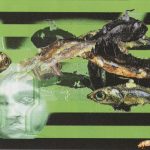
!OINK
[Ruth Fleishman]
Categories: [Interactive & Monitor-Based] -
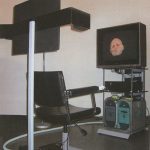
affectiveCinema
[Michel Durieux] [Jan Torpus]
Categories: [Installation] [Interactive & Monitor-Based] -
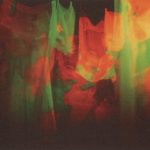
After the Hunt
[Karen Hillier] [Bill Jenks]
Categories: [Installation] [Interactive & Monitor-Based] -
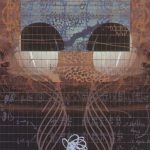
Ascension, Scorpion
[Antje Kharchi] [Marte Newcombe]
Categories: [2D & Wall-Hung] -
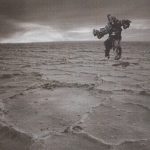
Badwater, Hotlicks
[Jen Zen (Jen Grey)]
Categories: [2D & Wall-Hung] -
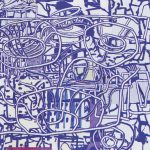
Blue Bowls
[James Faure Walker]
Categories: [2D & Wall-Hung] -
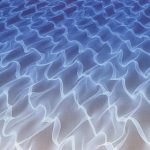
Caustic I
[Eric Heller]
Categories: [2D & Wall-Hung] -
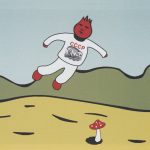
CCCP Vs. St. Valentina
[Sergey Aniskov]
Categories: [Animation & Video] -
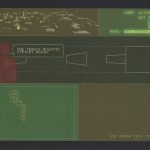
Chroma
[Erik Loyer]
Categories: [Interactive & Monitor-Based] -
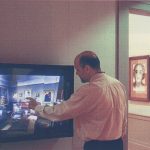
Cone Apartments
[Dan Bailey] [Alan Price]
Categories: [Interactive & Monitor-Based] -
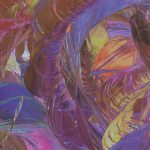
Conscious
[Masa Inakage]
Categories: [2D & Wall-Hung] -
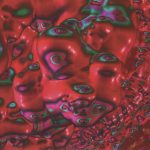
Cytolon
[Yoichiro Kawaguchi]
Categories: [Animation & Video] -

Delray Laboratory
[Matthew Biederman] [Bart Woodstrup]
Categories: [Installation] -
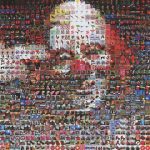
Des frags
[Reynald Drouhin]
Categories: [Interactive & Monitor-Based] -
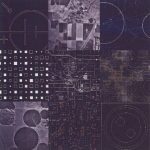
Emergent Codes
[Jeff Brice]
Categories: [2D & Wall-Hung] -

Experiments on Intelligent Form
[Marc Downie]
Categories: [2D & Wall-Hung] -
![fabric | ch vs lab[au] //in electroscape//](https://digitalartarchive.siggraph.org/wp-content/uploads/2018/02/2002_Keller_fabric-150x150.jpg)
fabric | ch vs lab[au] //in electroscape...
[Manuel Abendroth] [Christian Babski]
Categories: [Installation] -

FILMTEXT
[Mark Amerika] [Chad Mossholder]
Categories: [Animation & Video] [Interactive & Monitor-Based] -
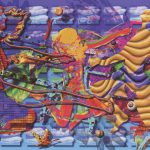
Flight
[Kurt Bakken]
Categories: [2D & Wall-Hung] -

Flow Bronze
[Bathsheba Grossman]
Categories: [3D & Sculpture] -

FLUID
[Ranjit Bhatnagar] [Frank Lantz]
Categories: [Installation] [Interactive & Monitor-Based] -
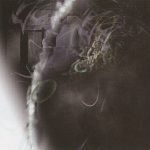
Formation
[Dan Lu]
Categories: [2D & Wall-Hung] -

FRONT
[Ralph Borland] [Jessica Findley]
Categories: [Installation] [Interactive & Monitor-Based] -
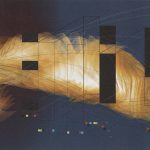
Frozen Etude
[Kent Oberheu]
Categories: [2D & Wall-Hung] -
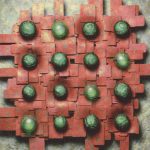
High resolution 3-dimensional rendering ...
[Kenneth A. Huff]
Categories: [2D & Wall-Hung] -

Homo lndicium
[Ioannis Yessios]
Categories: [Installation] [Interactive & Monitor-Based] -
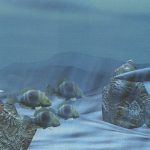
Journey to the Oceans of the World
[William Pensyl]
Categories: [Installation] -
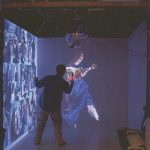
La Guitarrista Gitana
[Daniel Keefe]
Categories: [Interactive & Monitor-Based] -
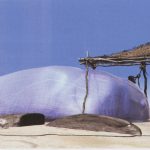
La mort de Tau (The Death of Tau)
[Jérôme Boulbès]
Categories: [Animation & Video] -
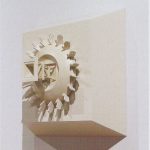
Large-scale Rapid Prototype Sculptures
[Brit Bunkley]
Categories: [3D & Sculpture] -
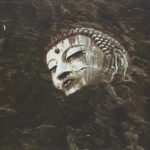
Le Conte du monde flottant (The Tale of ...
[Alain Escalle]
Categories: [Animation & Video] -
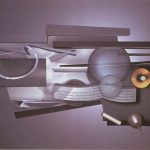
Léger Reconstructed (Overhead View)
[E. Tulchin]
Categories: [2D & Wall-Hung] -
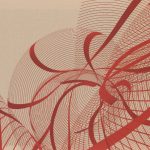
Line
[Kazuma Morino]
Categories: [Animation & Video] -
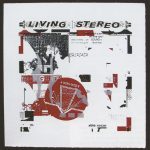
Living Audio
[Tahir Hemphill]
Categories: [2D & Wall-Hung] -

Loops
[Marc Downie] [Shelley Eshkar]
Categories: [2D & Wall-Hung] -

Man Garden
[Yuriko Amemiya]
Categories: [Animation & Video] -
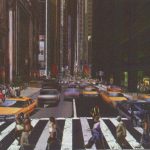
NEWYORKEXITNEWYORK
[Priam Givord] [Martin Lenclos]
Categories: [Interactive & Monitor-Based] -

Painting By Numbers III
[Lise-Hélène Larin]
Categories: [Animation & Video] -
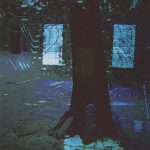
Reconstruction
[Ching-Fang Chiang] [Caroline Quinlan]
Categories: [Installation] [Interactive & Monitor-Based] -
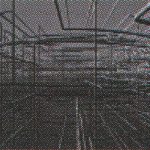
Refinery #53, Mesh #3 Iso
[Mark J. Stock]
Categories: [2D & Wall-Hung] -
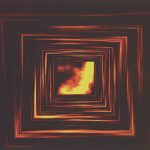
Residue
[Dennis H. Miller]
Categories: [Animation & Video] -
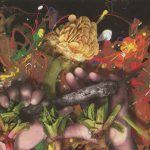
Running Wild
[Stan Bowman]
Categories: [2D & Wall-Hung] -
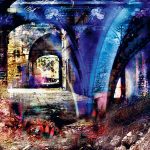
Safed Hiding Places, Wilder Building
[Cynthia Beth Rubin]
Categories: [2D & Wall-Hung] -
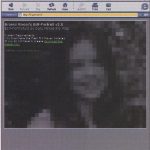
Self-Portrait version 2.0
[Paul Cunningham] [Brooke Singer]
Categories: [Interactive & Monitor-Based] -
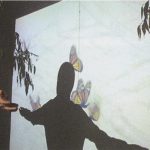
Shadow Garden
[Zack Booth Simpson]
Categories: [Installation] [Interactive & Monitor-Based] -
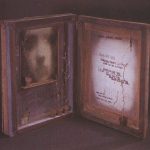
Someone, Somewhere, Sometime
[Jessica Maloney]
Categories: [3D & Sculpture] -
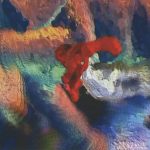
Still I Rise
[Umesh Shukla]
Categories: [Animation & Video] -
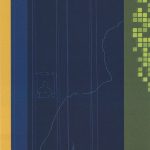
Storybeat
[Geoffrey Thomas]
Categories: [Interactive & Monitor-Based] -

Storyland
[Nanette Wylde]
Categories: [Interactive & Monitor-Based] -
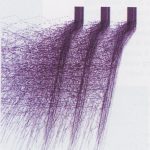
strokes_mi31, tree11, baum_V14
[Hans E. Dehlinger]
Categories: [2D & Wall-Hung] -
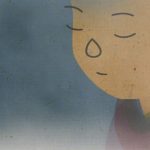
Sumisan
[Hyun-hee Jang]
Categories: [Animation & Video] -
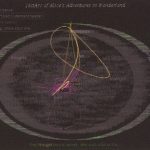
TextArc
[W. Bradford Paley]
Categories: [Interactive & Monitor-Based] -
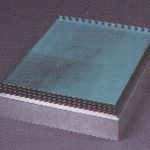
The Choreography of Everyday Movement (d...
[Teri Rueb]
Categories: [3D & Sculpture] -
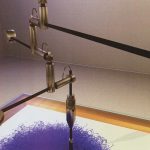
The Drawing Machine 3.141.15926v.2
[Fernando Orellana]
Categories: [Installation] -
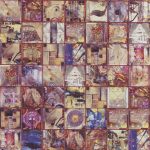
The Goodnight
[Chiara Boeri]
Categories: [2D & Wall-Hung] -
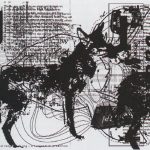
The Jackals
[Ben Chang] [Mary Lucking]
Categories: [2D & Wall-Hung] [Performance] -
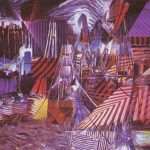
Timetable
[Ana Z. Ursyn]
Categories: [2D & Wall-Hung] -
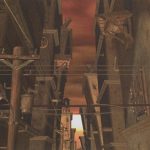
Traffic Jam
[Ty Primosch]
Categories: [Animation & Video] -
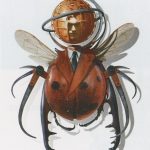
Transmigrations: Cases of Corporate Rein...
[Viktor Koen]
Categories: [2D & Wall-Hung] -
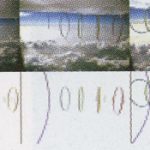
Transposition III
[Yoshiki Nishimura]
Categories: [2D & Wall-Hung] -
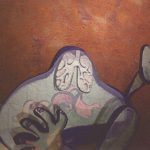
Trilemma
[Ye Won Cho]
Categories: [Animation & Video] -
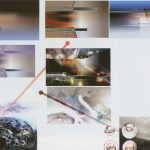
Unbound: The Uncertainty Principle, Sche...
[Ned Meneses]
Categories: [2D & Wall-Hung] -
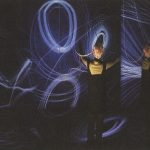
Uzume
[Roland Blach] [Petra Gemeinboeck]
Categories: [Installation] [Interactive & Monitor-Based] -
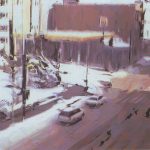
Webcam Art
[Atshushi Kasao]
Categories: [2D & Wall-Hung] -
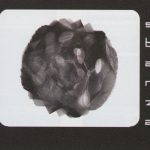
www.stanza.co.uk
[Stanza]
Categories: [Interactive & Monitor-Based] [Internet Art]
Exhibition Writings and Presentations:
-
Title:
Art Games and Breakout: New Media Meets the American Arcade
Author(s):
Category: Paper
Abstract Summary:
This paper explores how the interactive paradigms and interface designs of arcade classics like Breakout and Pong have been incorporated into contemporary art games and offer new possibilities for political and cultural critique.
[View PDF]Title: Feminist Transgressions? Object and Process in Transgenic/Genetic Works by Women
Author(s):
Category: Paper
Abstract Summary:
Interest in new technologies has fostered a growing interdisciplinary exploration between artists, scientists, social scientists, and designers. Particular types of artwork have held attraction for the artist-scientist in the 20th and 21st centuries: artificial life, evolutionary art, and genetic art have been created by those with an interest in science and organic structures. Concerns inherent to these contemporary interests are centuries old; 1 the use of novel technologies to mimic or create life can be traced to the Ancient Greeks, Jewish, Chinese, and Egyptian cultures, in which stories of famous pneumatic automata and golem originated.
[View PDF]Title: From Artificial Life to Augmented Reality: "It's not about technology, it's about what technology is about"
Author(s):
Category: Essay
Abstract Summary:
This paper examines the influence of two areas of technological research upon my art practice. For me, technologies provide inspiration in a variety of ways. It can begin with a simple instinct on first contact with a technological object, a system, or a scientific idea. Often, an extended period of play or exploration with the technology needs to take place before the artistic possibilities reveal themselves. The two main areas of technological focus in this paper are Artificial Life and Augmented Reality, with particular attention to the development of ideas and philosophical concerns underlying the art that I make. Examples of completed works and works in progress will be shown. It is my intention in doing this to examine some aspects of the artist’s role in unraveling the meanings nesting within technological and scientific endeavors.
[View PDF]Title: Fun, Love, and Happiness — or The Aesthetics of Play and Empathy in Avatar Worlds
Author(s):
Category: Essay
Abstract Summary:
I was asked recently why I would be interested in theorizing on play outside of the context of games and persistent environments. The answer has to do with the processes of creativity, self expression, and authorship that arise when we consider interactivity in virtual worlds. Artmaking as play, and empathy as a foundation of collective authorship, are the central themes of this talk. But is that art? If one allows that art is an outgrowth of a set of techniques, tools, conventions, visual histories, aesthetic vocabularies, and above all an urge of creative self-expression then we would have to say yes. If, additionally, we posit that the digital medium may, perhaps, bring with it a special quality that we have not yet pinned down, despite various efforts to do so, then I would like to suggest that that special digital quality is reflected precisely in aesthetics of play, empathy, and a sense of collective identity and multiplicity of authorship.
[View PDF]Title: Interface Ecosystem, The Fundamental Unit of Information Age Ecology
Author(s):
Category: Paper
Abstract Summary:
The Information Age is the period of history in which products and services based on information and knowledge have principal economic value. Information artifacts are implements of use and aesthetic expressions that both reflect and create the ways in which people individually and collectively think and act. Interactive artifacts are designed to engage people in access to and development of knowledge and information. Their human computer interfaces are instances of a broader set of phenomena. Cultural, creative, technological, and everyday frames of reference, spoken languages, economic positions, programming languages, and runtime platforms converge through the lens of the interface nexus. It is necessary to abstract and extend our notion of interface and to contextualize the operation of interfaces amidst dynamic meshworks, in order to address these phenomena.
With regard to life on earth, ecology investigates the web of relations between interdependent organisms and their surroundings. In the Information Age, people, activities, codes, components, and systems form the same kinds of interrelationships. Interfaces are the multidimensional border zones through which these relationships are constituted. Interface ecology investigates the dynamic interactions of media, cultures, and disciplines that flow through interfaces. The semiotic encodings of these wide-reaching systems of representation are their interactions’ building blocks. Interfaces recombine semiotic codes, forming hybrids.
The ecosystems approach brings the perspectives of diverse disciplines to bear on what interfaces are, how they work, and how they can work. Disciplines, and the media, cultural, and epistemological forms to which they apply, are free to relate in meshworks, opening inquiry. No system of representation dominates; none are considered subordinate. Rather, they are interdependent elements, connected by referential flows of interaction.
[View PDF]Title: Ludology: From Representation to Simulation
Author(s):
Category: Paper
Abstract Summary:
Most of the current studies of the creative potential of computer games have been done through tools designed for narrative media (literary theory, narratology, film theory). Several attempts have been made by both academics and designers to create “interactive narratives” that would allow players to experience the qualities of narrative while being able to interact with the environment, characters, and events in the “story.” Nevertheless, authors have so far failed to provide a compelling example of “interactive fiction.” Brenda Laurel, a long-time advocate of this genre, recently described it as “a hypothetical beast in the mythology of computing, an elusive unicorn we can imagine but have yet to capture.” [Laurel 2001]
In this paper I argue, following the work of such theorists as Espen Aarseth and Markku Eskelinen, that narrative is not the best paradigm for understanding not only computer games but also cybernetic art and toys, simply because they do not rely on traditional representation but on simulation.
By simulation, I mean an alternative form of describing and understanding reality that is based on the modeling of systems. My semiotic approach to simulation is close to the one developed by computer science’s simulation theory, but it differs in that its goal is not necessarily predicting behaviors. Rather, I view it as an alternative representational form that opens a new set of rhetorical possibilities that stress system behavior and user experimentation.
By comparing the similitude and differences between simulation and representation, I will provide a theoretical framework that will allow us to better comprehend the process behind the interpretation of such cybernetic systems as toys, cyberarts, traditional games, and computer games. My ultimate goal is to contribute to the understanding of the rhetorical characteristics of these simulational media.
[View PDF]



